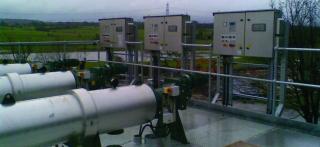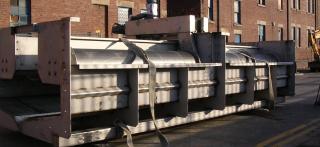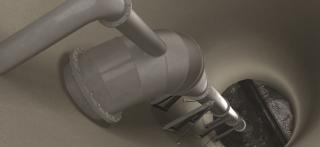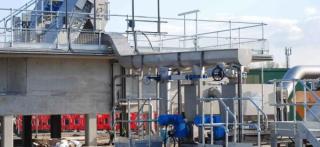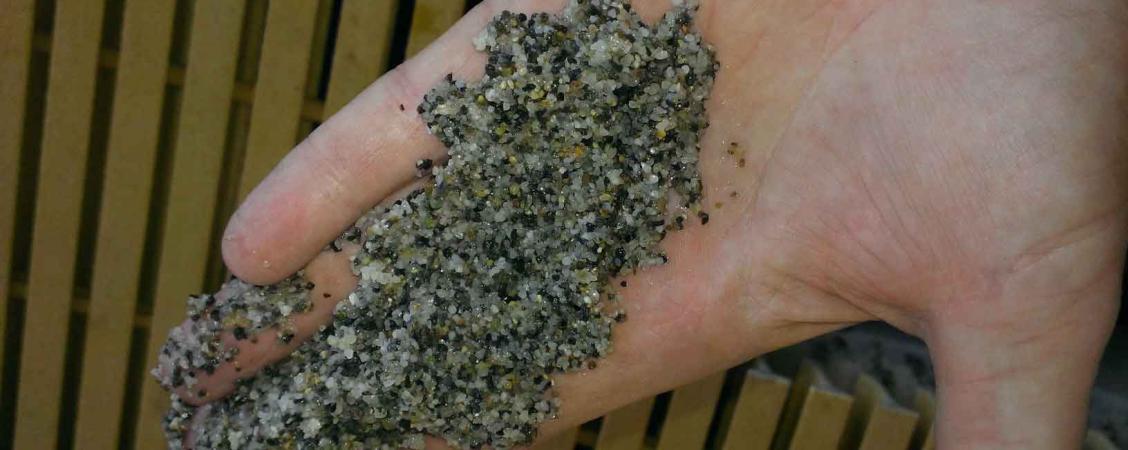
Grit King System Saves Chehalis, WA Plant From a Near Disaster
A Grit King® grit removal system not only prevented grit from impacting the plant, it also protected the plant from being overwhelmed when a sand filter recirculation pump sent filter media back into the headworks.
Situation
Chehalis was building a new WWTP and required a grit removal system that was simple to use with minimal moving parts.
Problem
The grit system was not the most important process consideration when designing an entirely new treatment plant in Chehalis, Washington. When a pump malfunction directed sand from the effluent filters to the plant drain (rather than back to the filter beds) the installed Grit King® grit removal system not only kept the plant running, it alerted plant operators that there was a problem.
Chehalis straddles Interstate 5 at a point almost exactly halfway between Portland, Oregon and Seattle, Washington. The city was originally called Saundersville in honor of the donator of the land. The city is now named after the Chehalis people, a native tribe of western Washington State. The City of Chehalis got its start in 1873 as a settlement around a warehouse next to the railroad track. The first wastewater treatment plant was built in 1948.
Following several upgrades over the years, the plant became unable to keep up with projected future flow rates and stringent Department of Ecology permit requirements. In 2002, design began for the Chehalis Regional Water Reclamation Facility, a completely new plant to be located on a new site, 200 yards (180 m) to the northeast.
A design-bid-build project, the plant was constructed in 2007. The facility treats an average flow of 1.3 Mgal/d (57 L/s), with peak flows in excess of 10 Mgal/d (38 MLD) three to four times per year. When the Chehalis River drops below a certain level, up to 3.5 Mgal/d (13.3 MLD) is treated to reclaimed water standards and used to irrigate the city’s 250 acre poplar tree plantation.
Solution
Flow is pumped to two parallel screens with ¼” (6.4 mm) openings in the elevated headworks. Flow is then directed to two 11' (3.4 m) diameter free-standing Grit King® units, with shared influent and effluent boxes, designed to remove 95% of all grit 150 µm and larger at a peak flow of 13 Mgal/d (15 MLD) through both units. Collected grit is washed and discharged from the bottom of the Grit King® units into a classifier for dewatering. Grit and screenings are disposed of at the landfill.
We were building a brand new plant with all new processes so the grit system was the least of our worries, it just needed to be simple to use and have minimal moving parts," said Patrick Wiltzius, Wastewater Superintendent. "The Grit King® system met this requirement. Construction of the new system was easy. It was delivered to the site and the contractor bolted it into place within a couple of days.
From the headwords, flow is treated in one or more of three Sequencing Batch Reactor (SBR) tanks, depending on flow, each having a capacity of 1.55 million gallons (5.9 million liters). During dry weather the wastewater is chemically treated with alum prior to sand filtration and UV disinfection and then pumped to the City’s poplar tree plantation. Sludge is dewatered by a belt filter press then lime pasteurized and heated to produce a class A biosolid which is sold to local farmers.
Outcome
The Grit King® is an advanced hydrodynamic separator that augments gravitational forces to effectively separate grit from water. Internal flow structuring components create a long flow path for solids, aiding settlement and maximizing grit capture in an all-hydraulic device. The Grit King® is available as a free standing or in-situ unit. The free standing unit often requires no grit pump making the classifier screw the only mechanical component on the grit system.
We were building a brand new plant with all new processes so the grit system was the least of our worries, it just needed to be simple to use and have minimal moving parts," said Patrick Wiltzius, Wastewater Superintendent. "The Grit King® system met this requirement. Construction of the new system was easy. It was delivered to the site and the contractor bolted it into place within a couple of days.
The new grit system typically filled their 1 yd3 (0.77 m3) grit dumpster every week. They knew something was amiss in August 2012 when the dumpster began filling up within days. It quickly became apparent that the material in the dumpster was identical to the high grade silica sand used in the sand filters. An investigation determined that the discharge to one of the airlift pumps designed to cycle the sand back through the filters was plugged. Rather than being directed into the sand filter the sand ended up in the plant drain system which is directed back to the headwords.
The filter sand was captured and removed by the Grit King® units, protecting the SBRs downstream. Once the cause of the problem was identified, the fluidizing and discharging of grit from the Grit King units was performed more frequently to purge the system of the increased load. The plant continued to successfully operate during the entire event with no equipment shutdowns.
The Grit King® system worked great without any problems,” said Patrick. "Since its installation the system has been excellent. It has been virtually trouble free. Our grit is cleaner with fewer odors.
Each year one of the three SBRs is cleaned. Patrick estimates the amount of grit in the bottom of one basin, measuring 97' (30 m) on each side, is now “maybe a wheelbarrow full”.













